NUR 211 FINAL EXAM HEALTH ASSESSMENT
Document Content and Description Below
When assessing a 2-3 year old child, what is important to consider? Answers: Assess least invasive to most invasive. Start with examining the ears and mouth. Make sure to examine the child lying o... n the exam table. It’s easier to examine the child if the parent is not in the room. Question 2 0 out of 1.5 points The nurse notes an audible, crunching/grating sound on the client’s knee while climbing the stairs. Choose the best term. Answers : Crepitus Bulge sign Ballottemen t Inversion Question 3 1.5 out of 1.5 points The nurse palpates the left upper quadrant of abdomen with the knowledge that which organs are located in that area? Answers : Liver and gallbladder. Pancreas and spleen Large intestine and liver Left ureter and gallbladder Question 4 1.5 out of 1.5 points Identify which reflex is being tested in this picture. Answers : Plantar Patellar Triceps Achille’s Question 5 1.5 out of 1.5 points The clinic nurse assesses the skin of a white client with a diagnosis of psoriasis. The nurse understands that which characteristic is associated with this skin disorder? Answers : Clear, thin nail beds Red-purple raised areas Oily skin and no episodes of pruritus Silvery-white scaly patches on the scalp, elbows, knees, and sacral regions Question 6 1.5 out of 1.5 points "When testing stool for occult blood, the nurse is aware that a false-positive result may occur with:" Answers : a large amount of red meat within the last 3 days. absent bile increased fat content increased ingestion of fruit Question 7 1.5 out of 1.5 points The nurse is preparing to complete a musculoskeletal examination on a client. Which two assessment techniques would the nurse plan to use during this exam? Answers : Inspection and percussion Percussion and palpation Auscultation and percussion Inspection and palpation Question 8 1.5 out of 1.5 points While assessing edema on a client’s lower leg, the nurse notices a deep imprint of his fingers where the leg was palpated which takes several minutes to resolve. How would the nurse document this finding? Answers : No edema 1+ edema 3+ edema 4+ edema Question 9 1.5 out of 1.5 points The nurse is performing an assessment on an older client having difficulty sleeping at night. Which statement indicates that teaching about improving sleep is necessary? Answers: "I drink hot chocolate before bed" "I swim three times a week" "I have stopped smoking cigars" "I read for 40 minutes before bed" Question 10 1.5 out of 1.5 points "After completing a comprehensive health assessment of a client, which of the following statement is subjective data?" Answers : The client complains of itching The client s skin feels warm to the touch The client is scratching his arm The client s temperature is 100°F Question 11 0 out of 1.5 points Which of the following statements is most appropriate when the nurse is obtaining a genitourinary history from an elderly man? Answers : Do you need to get up at night to urinate? " Do you experience nocturnal emissions, or wet dreams? " Do you know how to perform urinary self-examination? Has anyone ever touched your genitals and you did not want them to? Question 12 1.5 out of 1.5 points "During a breast health interview, a client states that she has noticed pain in her left breast. The nurse s most appropriate response to this would be:" Answers: I would like some more information about the pain in your left breast. Don t worry about the pain; breast cancer is not painful. I would like some more information about the pain in your right breast. Breast pain is almost always the result of benign breast disease and so let s just ignore it. Question 13 0 out of 1.5 points The Glasgow Coma Scale is used to grade neurological responses to which three parameters? Answers : Eye opening, verbal response, motor response Verbal response, pain response, reflexes Pupil response, motor response, reflexes Motor movement and strength, reflexes, pupillary size and reaction Question 14 1.5 out of 1.5 points If a nurse uses their hand to press down into the abdomen to assess for tenderness, the nurse is performing which technique? Answers : Palpation Inspection Auscultation Percussion Question 15 0 out of 1.5 points "While obtaining a history of a 3-month old infant from the mother, the nurse asks about the baby s ability to suck and grasp the mother s finger. What is the nurse assessing?" Answers : Reflexes Intelligence Cranial atrophy Thalmus function Question 16 1.5 out of 1.5 points An 85-year-old patient comments during his annual physical that he seems to be getting shorter as he ages. The nurse should explain that decreased height occurs with aging because: Answers : of the shortening of the vertebral column. long bones tend to shorten with age. there is a significant loss of subcutaneous fat. there is a thickening of the intervertebral discs. Question 17 1.5 out of 1.5 points A client asks, “Why is touching my toes necessary? This is a sports physical examination not an exercise class.” How would the nurse reply? Answers : “This is the best way to check for symmetry of your arms.” “I am looking at the stretch of your ham strings.” “This allows me to see how straight your spinal column is.” “It is considered abnormal if you can’t touch your toes from this position.” Question 18 1.5 out of 1.5 points Medication administration or procedural errors can be prevented by completing which task? Answers : Ensuring the room is temperature controlled Closing the door and curtain Washing your hands Asking the client to give their name and date of birth Question 19 1.5 out of 1.5 points The nurse is assessing an older adult’s functional ability. What is the definition of functional ability? Answers : The measure of the expected changes of aging that one is experiencing The individual’s motivation to live independently The level of cognition present in an older person One’s ability to perform activities necessary to live in modern society Question 20 0 out of 1.5 points A client s respirations are 44. These respirations are considered to be which of the following? Answers : Tachypneic Apneic Eupneic Bradypneic Question 21 1.5 out of 1.5 points The client complains of ringing, crackling or buzzing in the ear. Choose the best term. Answers Tinnitus : Tympanic Otitis media Pinna Question 22 1.5 out of 1.5 points Which data do nurses document under the category of Family Health History? Answers : Present illness Allergies to medications Maternal Diseases Name and date of birth Question 23 0 out of 1.5 points The client has stiffness and fixation of a joint. Choose the correct term for this. Answers : Contracture Ankylosis Dislocation Subluxation Question 24 1.5 out of 1.5 points The most important technique when progressing from one auscultatory site on the thorax to another is: Answers : side-to-side comparison. top-to-bottom comparison. posterior-to-anterior comparison. interspace-by-interspace comparison. Question 25 0 out of 1.5 points The nurse notes fanning of the toes when the sole of the foot of an adult client is stimulated during assessment of the plantar reflex. How would the nurse chart this correctly? Answers: Babinski response Brudzinski sign Nuchal rigidity Hyperreflexia Question 26 1.5 out of 1.5 points The nurse should use which location for eliciting a deep tendon reflex? Answers : Achilles Femoral Scapula Abdomen Question 27 1.5 out of 1.5 points What would the nurse ask in order to gain insight into a disabled client’s functional ability? Answers : “When did the disability first begin?” “How has your disability affected your daily life?” “Why did you come to the clinic today?” “How do you feel about your disability?” Question 28 1.5 out of 1.5 points What is an example of objective data? Answers : A client receiving chemotherapy complains of nausea. A client states that they are feeling very anxious about their tests A client with an inner ear infection complains of dizziness The skin of a client who has liver failure has a yellowish tint. Question 29 1.5 out of 1.5 points The nurse is assessing the motor function of an unconscious client. The nurse would plan to use which of the following to test the clients peripheral response to pain? Answers : Nail bed pressure Sternal rub Pressure on the orbital rim Squeezing of the sternocleidomastoid muscle [Show More]
Last updated: 1 year ago
Preview 1 out of 44 pages
Instant download

Buy this document to get the full access instantly
Instant Download Access after purchase
Add to cartInstant download
Reviews( 0 )
Document information
Connected school, study & course
About the document
Uploaded On
Sep 02, 2021
Number of pages
44
Written in
Additional information
This document has been written for:
Uploaded
Sep 02, 2021
Downloads
0
Views
51



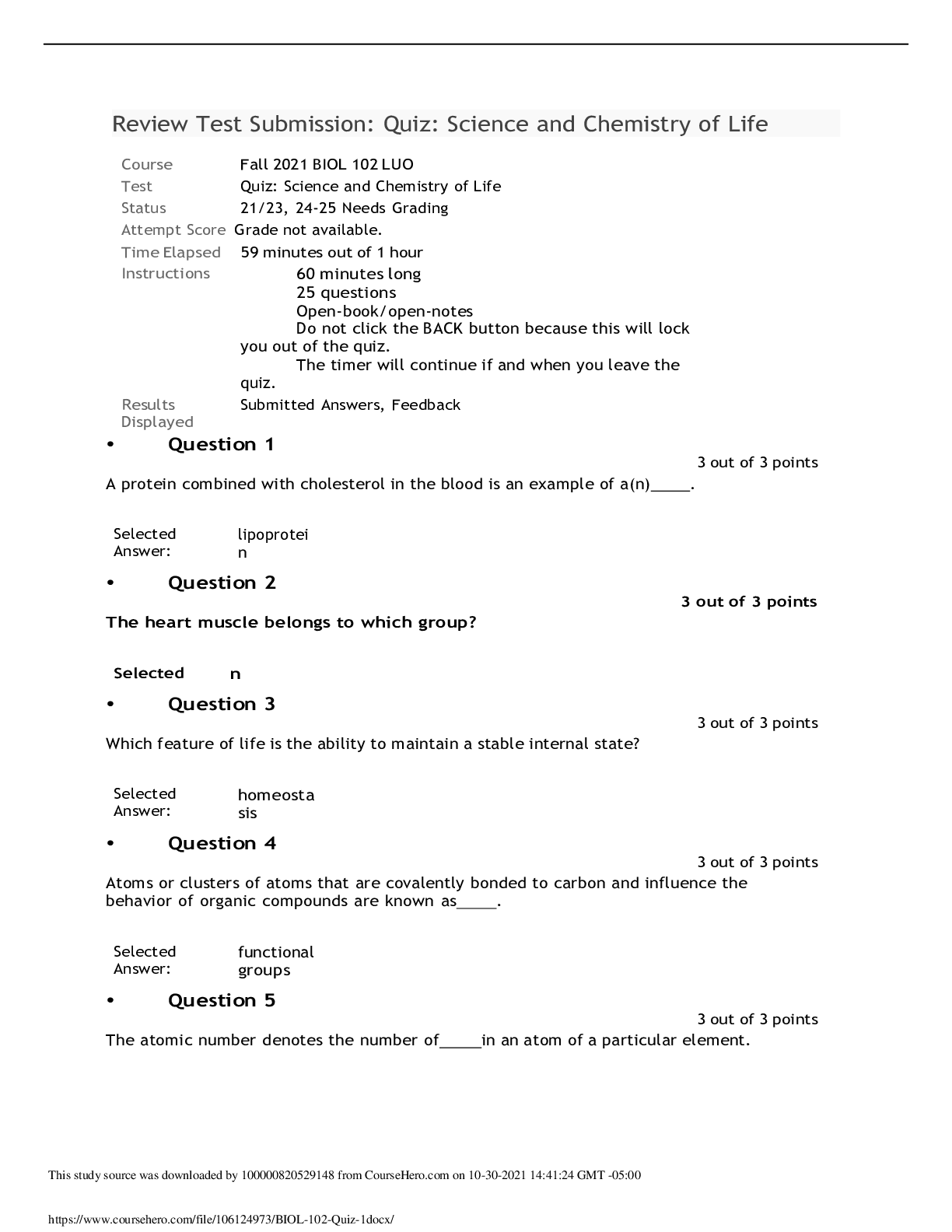
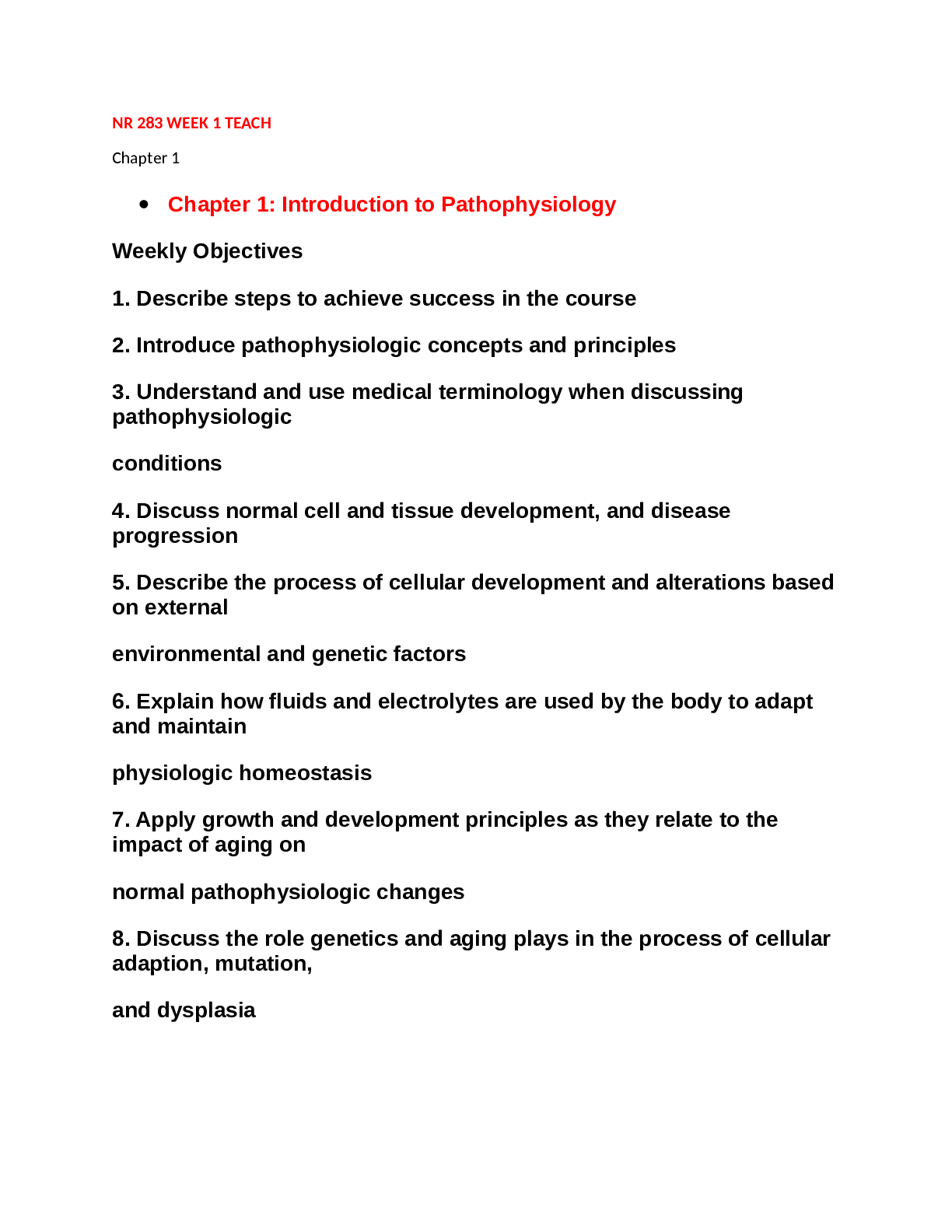
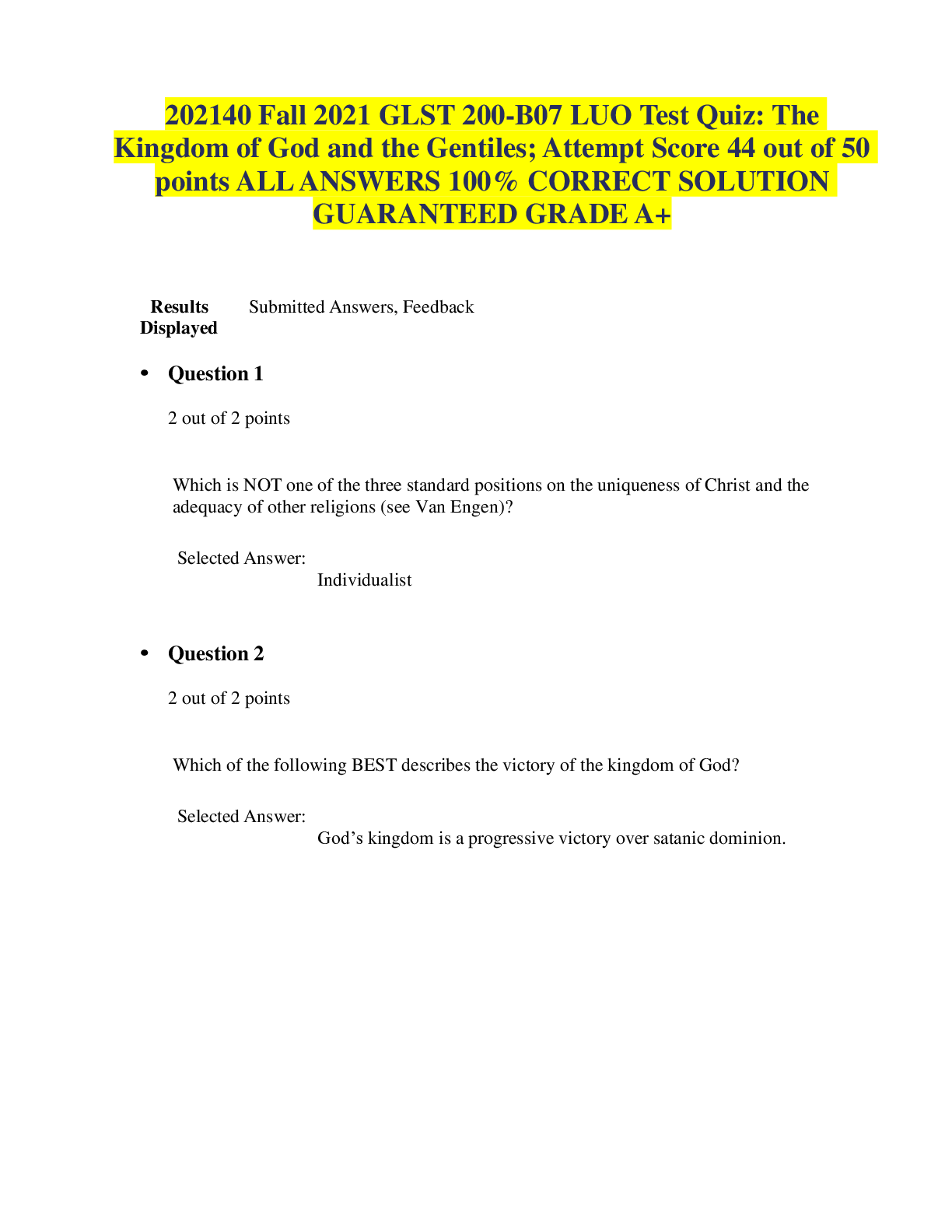
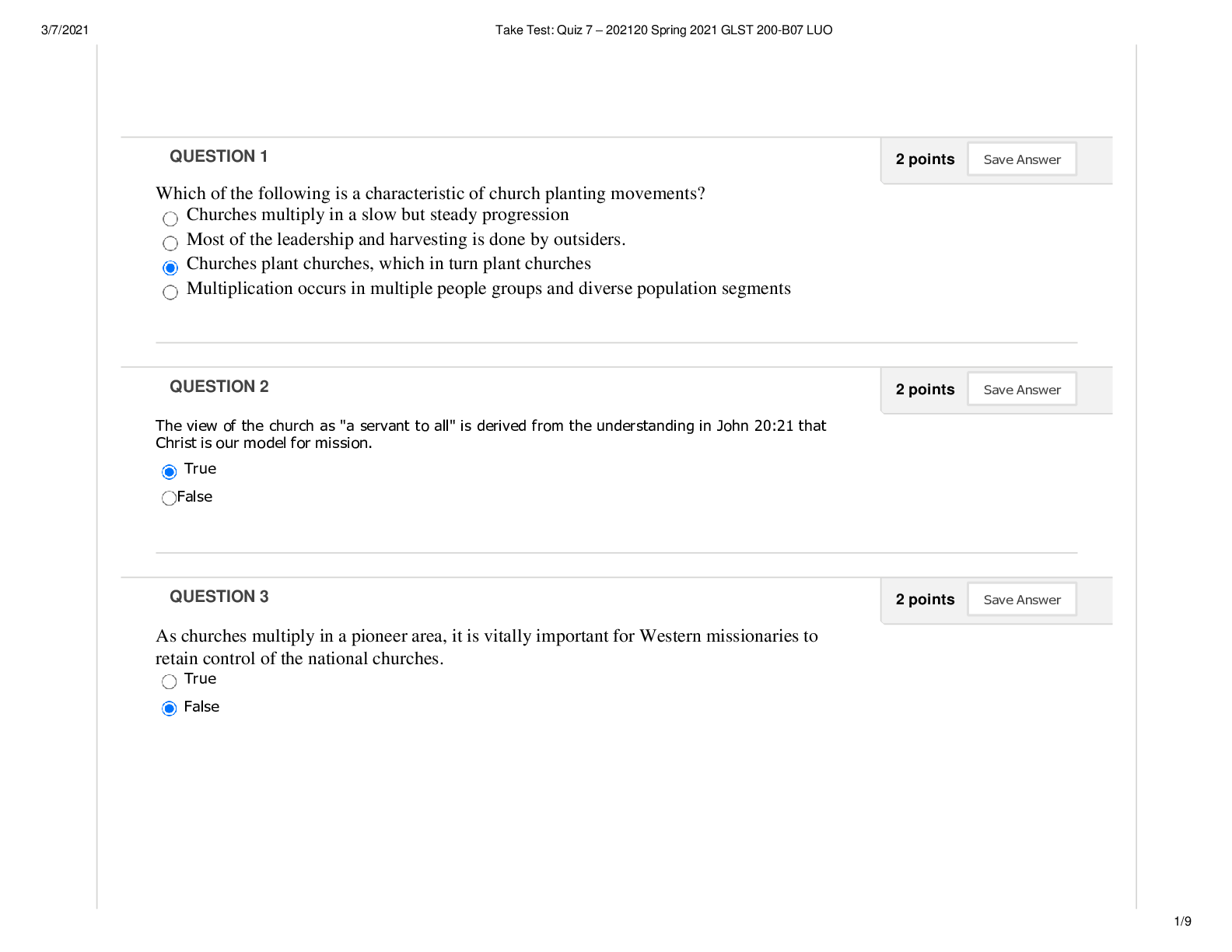
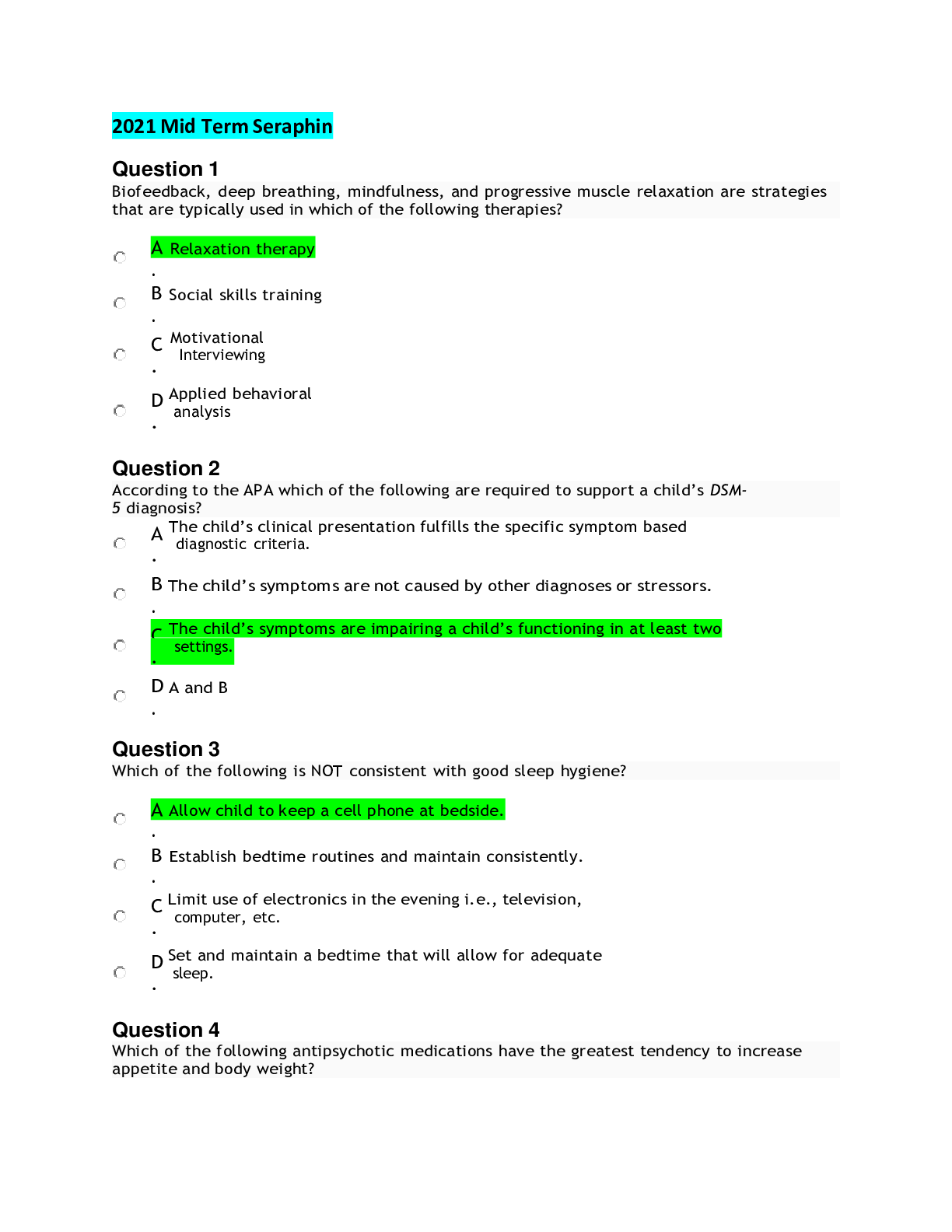
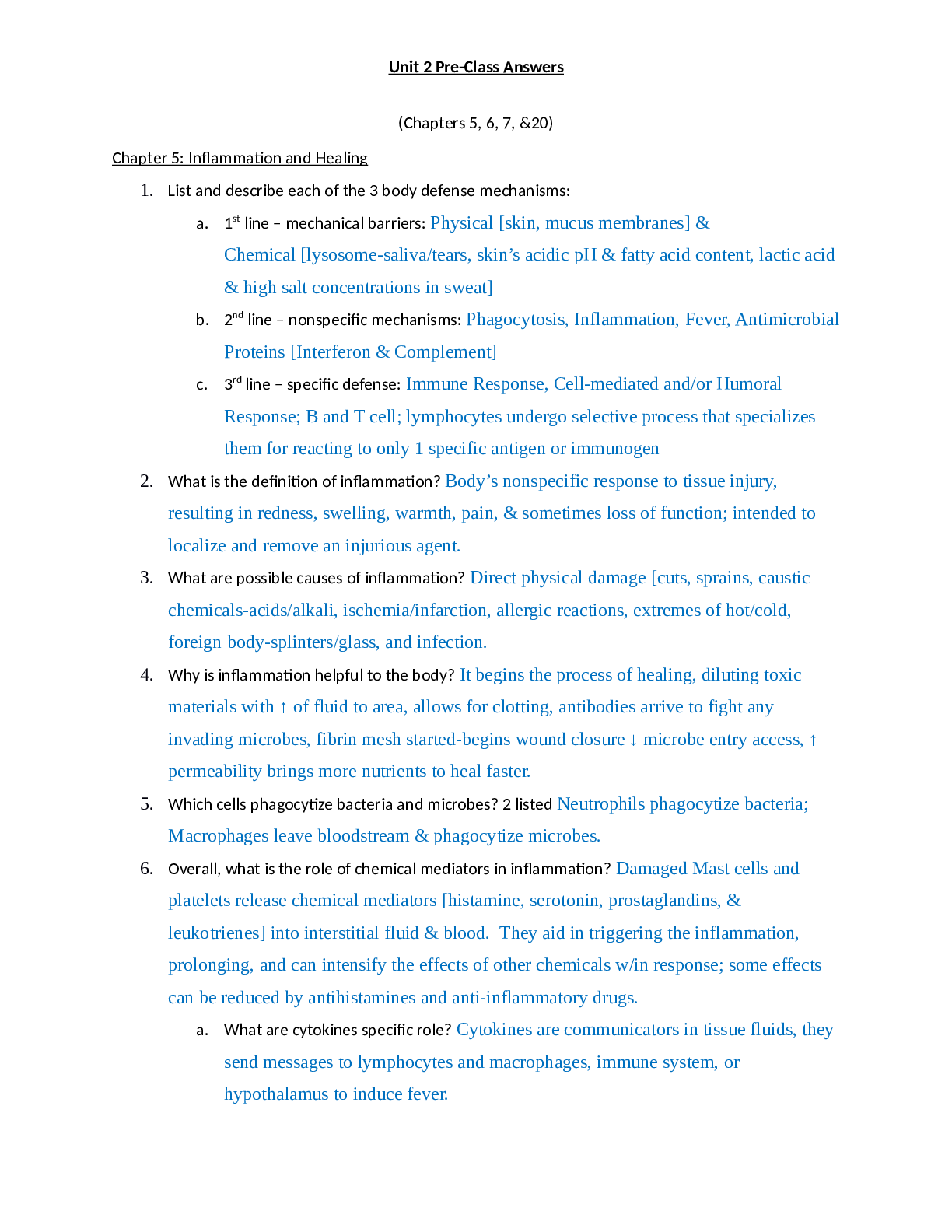
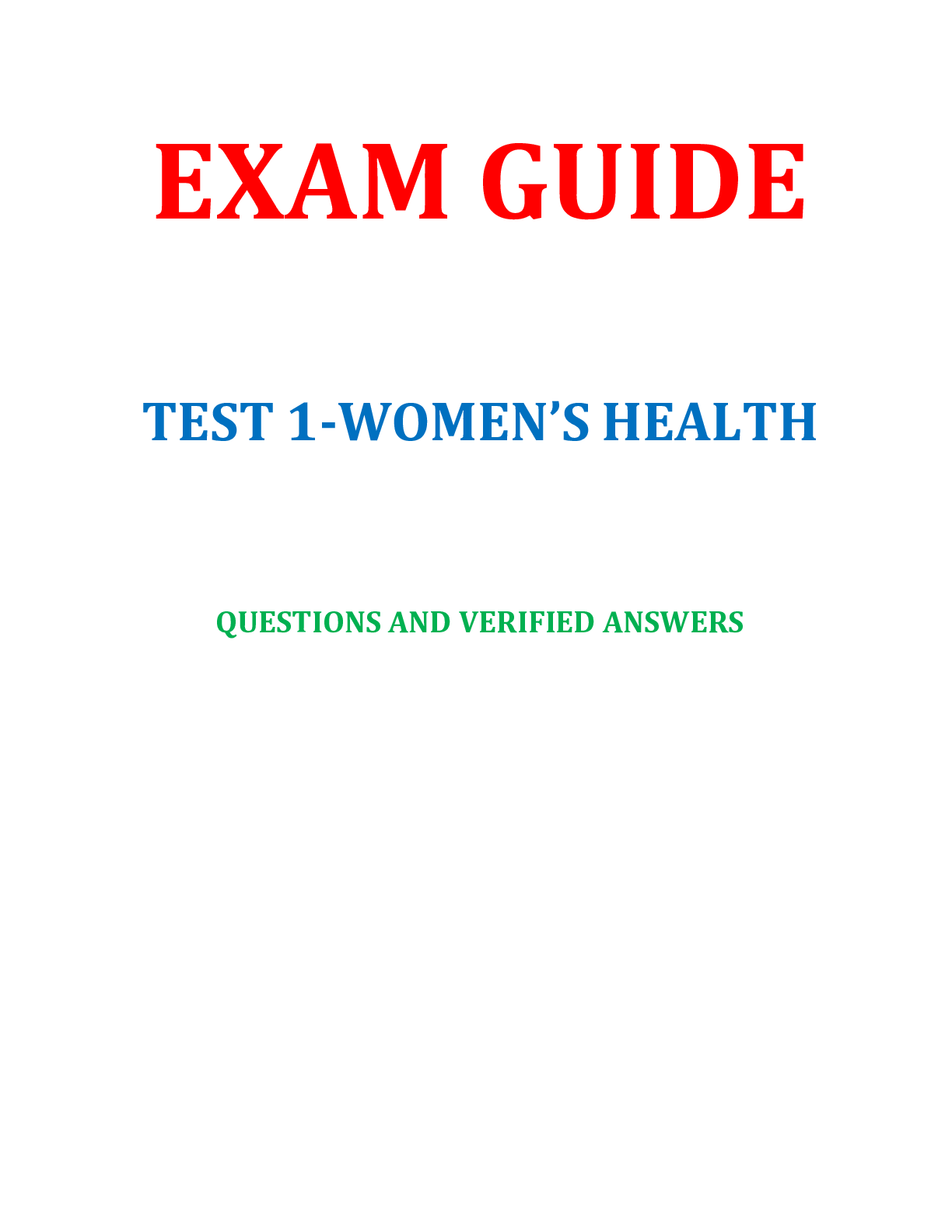


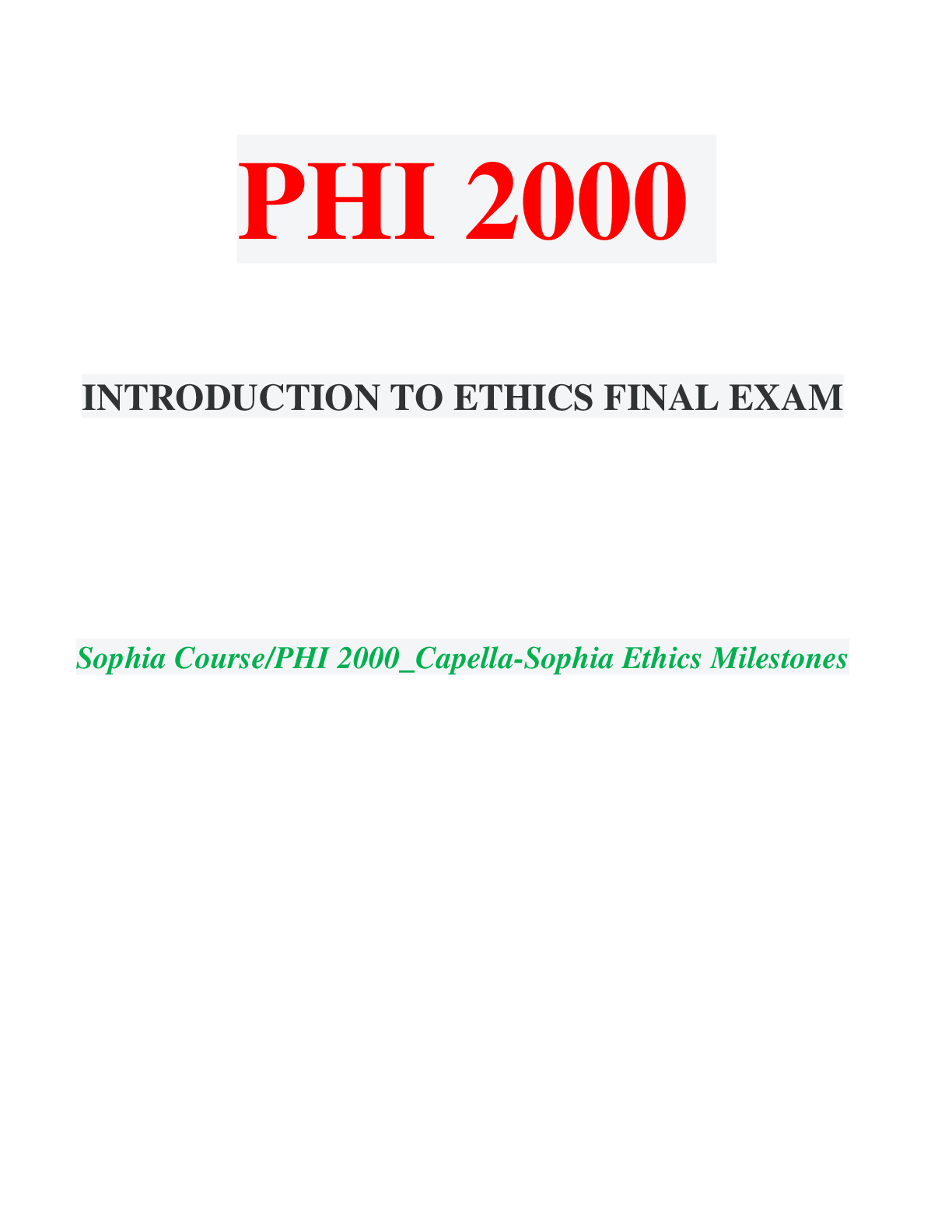

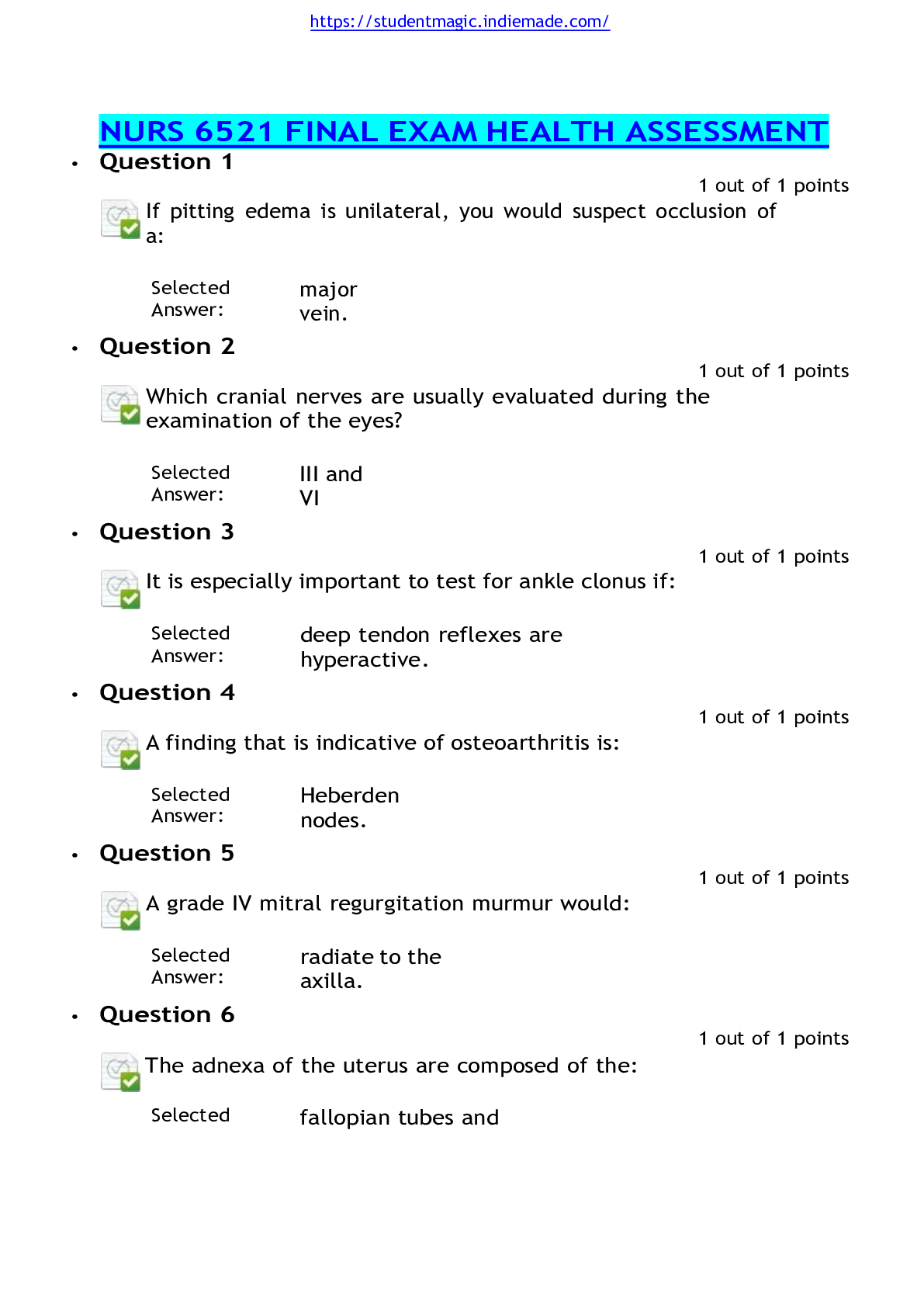

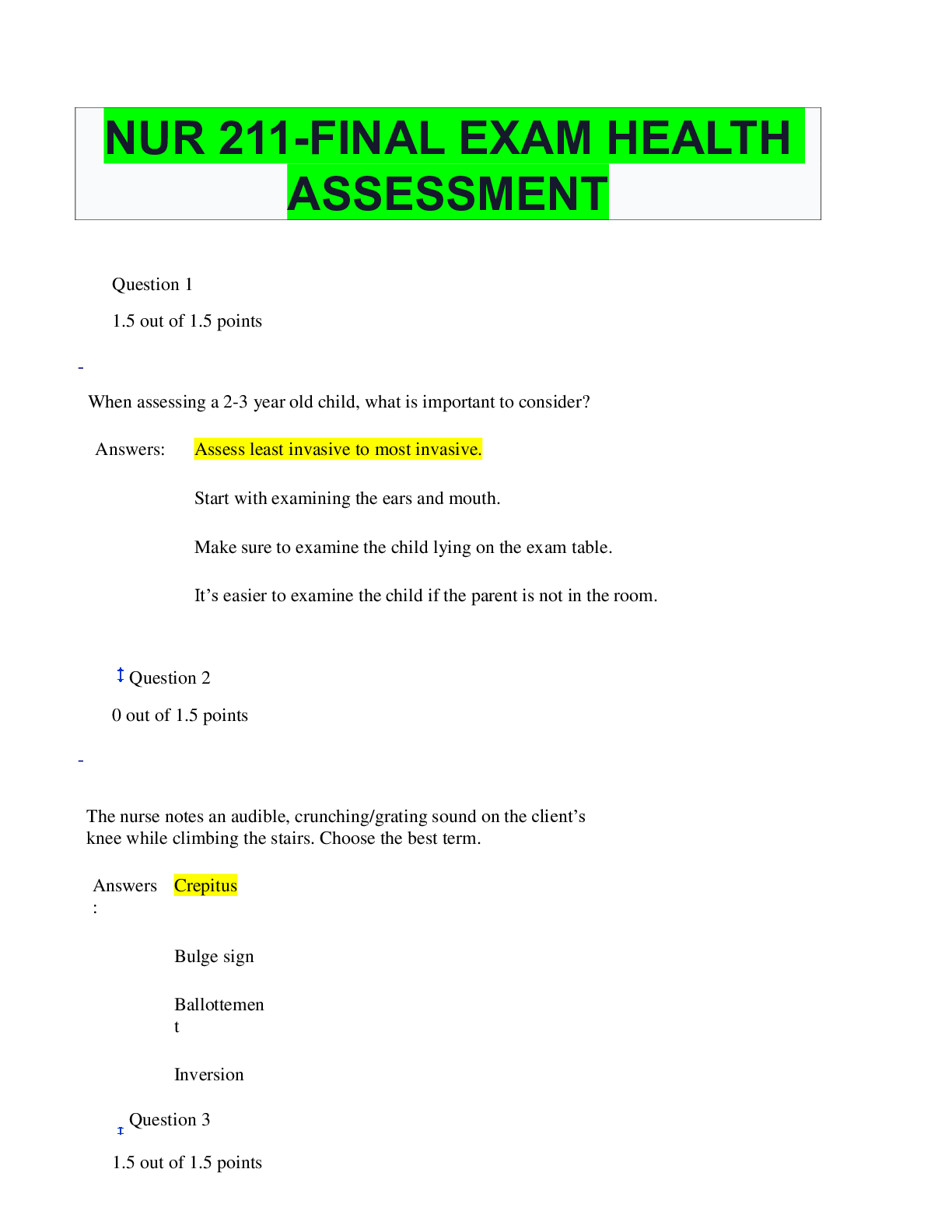
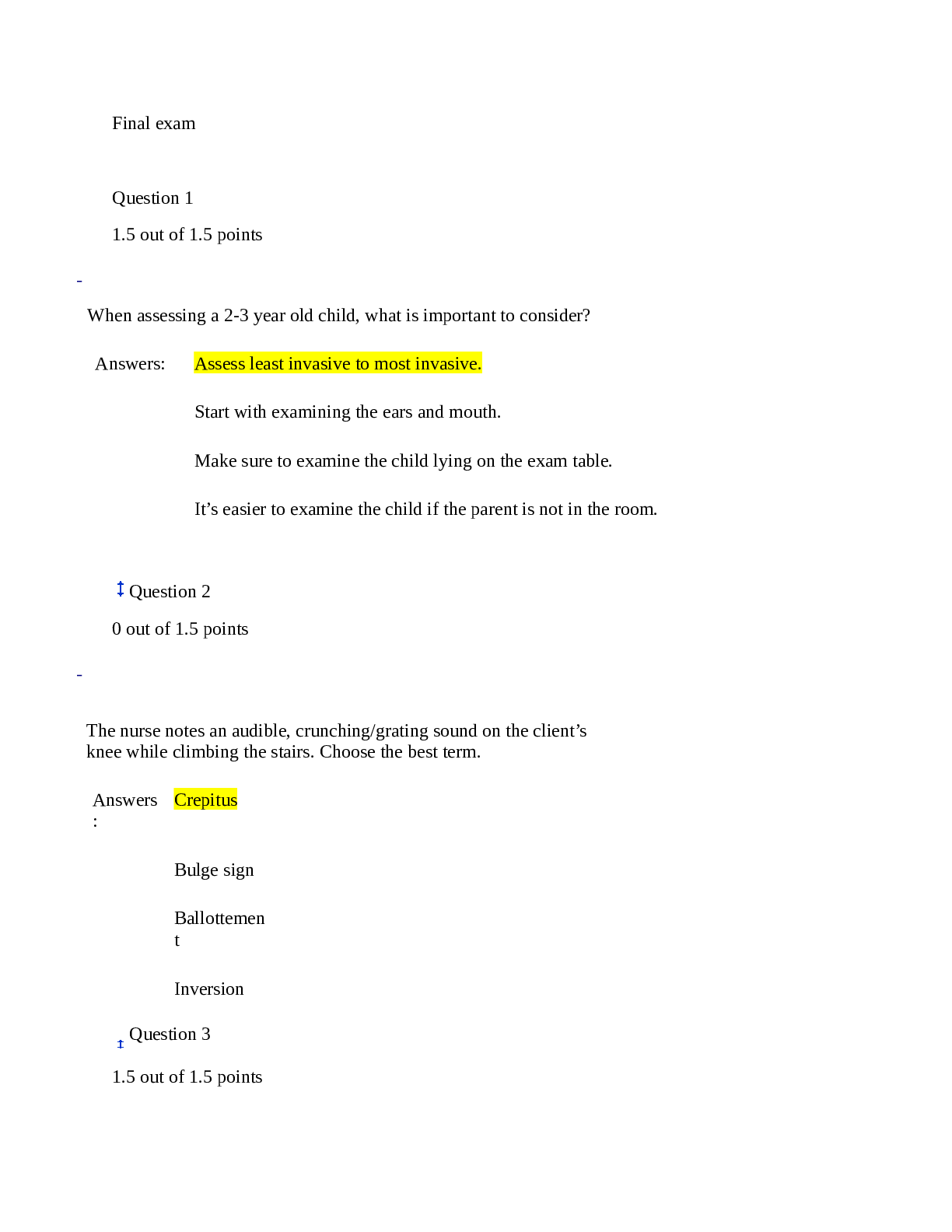
.png)
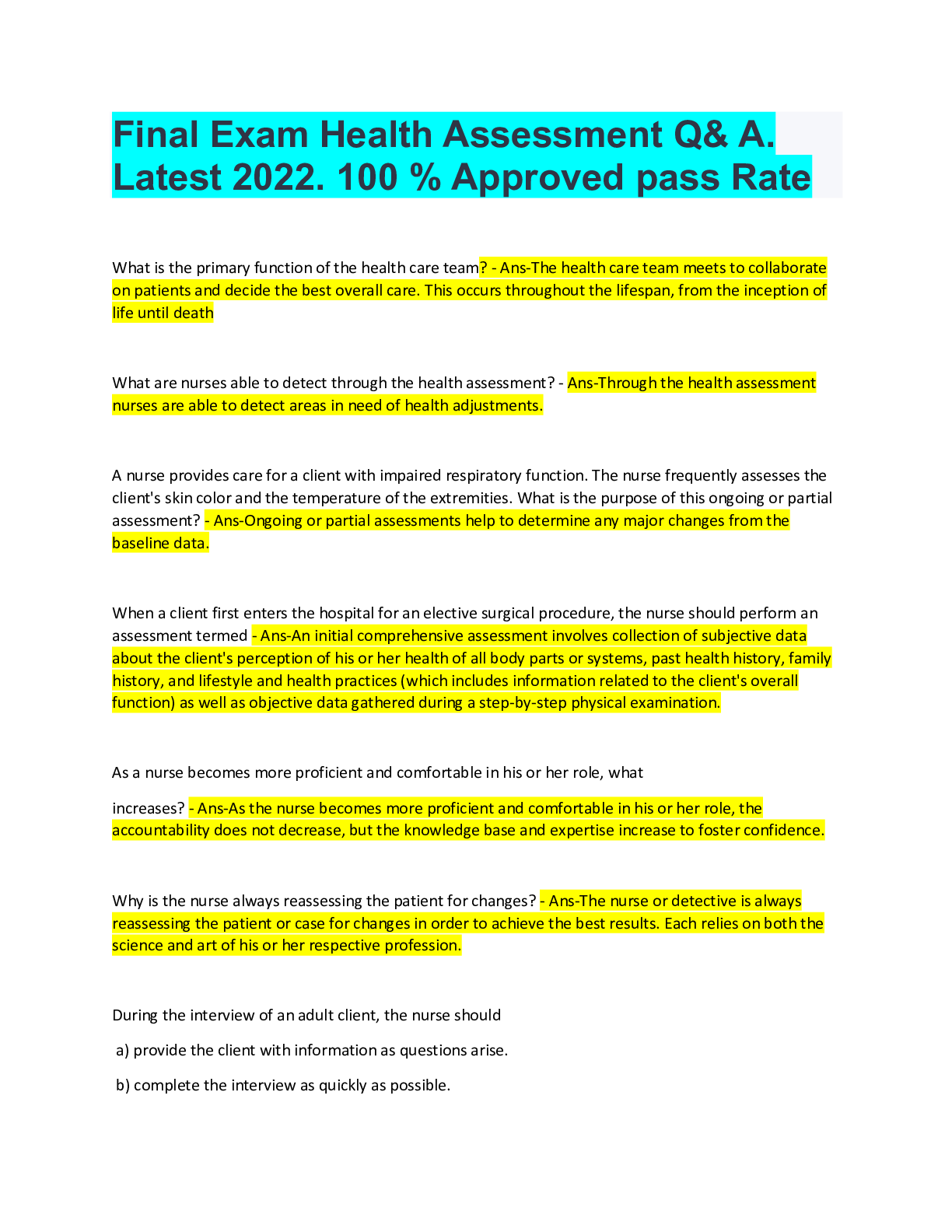
.png)
.png)

